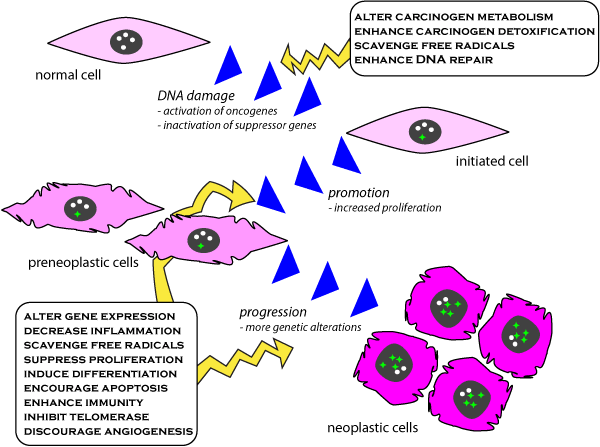

General strategies for treating cancer.
Treatment of cancer is appropriate provided the animal's quality of life can be preserved during treatment. Cure is often not the goal - rather extension of useful life (cure requires the removal of every single cancer cell). Provided quality of life is preserved, extending life of the patient by as little as a few months may be very worthwhile. This allows the owner to come to terms with their pet's impending death (quality time is quality time even though it is destined to be short). For some tumours, particularly those maintained by sex hormones, or thyroid tumours, response to treatment can be dramatic.
If quality of life is not preserved, treatment of cancer is inappropriate. Oncology is not about prolonging a pet's dying. Thus judgement of quality of life is of paramount importance. It requires both vet's and owner's assessment but some simple rules help: if the pet is not eating, is inactive and is not responsive to its owner, its quality of life is unsatisfactory; if the animal is in pain its quality of life is poor (painful cancers - bone tumours; bone metastases; rapidly expanding organ masses, spinal tumours, some peripheral nerve tumours)
Chemotherapy protocols used in veterinary medicine are purposefully not aggressive to minimize side effects and preserve quality of life during treatment. Veterinarians cannot sit down with their patients and explain that short term pain will provide long term gain. Unfortunately, the trade off of less aggressive protocols is shorter remission times.
Is the pet suffering as a result of the cancer?
Owners assume all animals (and people) with cancer are in excruciating pain. They must be reassured that this need not be the case and that if the animal appears to be suffering you would recommend euthanasia. It is very important for you to convey this point to the owner least they think the animal's well being is not paramount in your mind. Otherwise the client may become suspicious your recommendation to treat is based on your wish to earn money or "experiment" on the pet.
Will the pet suffer as a result of the treatment?
Most owners believe chemotherapy will cause their pet to become very ill and lose its fur. They need to be reassured that the chemotherapy protocols used in veterinary medicine are purposefully designed to minimize such complications. Be careful of some drugs, however. For instance, many dogs vomit after methotrexate and cisplatin. Also, dog breeds with wire-haired, curly or "woolly" coats (such as Old English sheepdogs, poodles, Afghans and some terriers) may lose their hair.
How long will the animal live?
Median survival time for the particular tumour type can be quoted but it is very important to emphasize and reemphasize that some animals will live for shorter and some longer than the median time. That way, if a pet comes out of remission much earlier than expected there is no recrimination. Moreover, the fact that a small number of patients will survive a long time following treatment for tumours such as lymphoma seems to be the incentive many owner's need to elect to treat.
How much will it cost?
Have an estimate ready for the first 3, 6 or 12 months of treatment including all anticipated costs (chemotherapy agents, administration costs, blood work, hospitalization). For example, treatment of a dog for lymphoma for a year at Massey University costs approximately $2000. Providing an "all up" estimate like this better allows the client to budget and avoids unexpected charges arising from such things as blood work.
Incisional or excisional biopsies are essential before treatment can be considered. Biopsy is necessary for diagnosis of the tumour and greatly assists prognosis (the pathologist should grade the malignancy of the tumour). Following excision of a mass, biopsy is necessary to determine if the tissue sample is free of tumour (clean margins). (See surgical oncology notes)
If the tumour can be removed in its entirety or "debulked" then surgery is usually indicated. Many publications in recent years have dealt with successful aggressive surgical techniques for removal of tumours (eg mandibulectomy for oral tumours and hemipelvectomy for pelvic tumours). The primary aim of the surgery is to remove as much of the tumour mass as possible. Complete removal offers the chance of a cure. Debulking of tumour is valuable because it reduces the number of cells resistant to chemotherapy and may stimulate dormant cells into cycling (and hence chemosensitivity). Surgery is also used for pain relief (eg osteosarcoma).
Adjuvant radiation therapy is indicated if not all visible tumour was removed at the time of surgery or if histopathology reveals dirty surgical margins or a type of tumour with a high rate of local recurrence (eg fibrosarcoma). For instance, adjuvant radiation therapy is often required for cutaneous mast cell tumours. Radiation therapy is rarely justified if systemic spread of the cancer can be demonstrated. Some of the most radioresponsive tumours in dogs and cats include lymphoma, mast cell tumours, and acanthomatous epulides. Adjuvant chemotherapy may also be helpful if clean margins are not obtained.
If the cancer is multicentric or has metastasized, systemic treatment is required. The primary systemic therapy is chemotherapy.